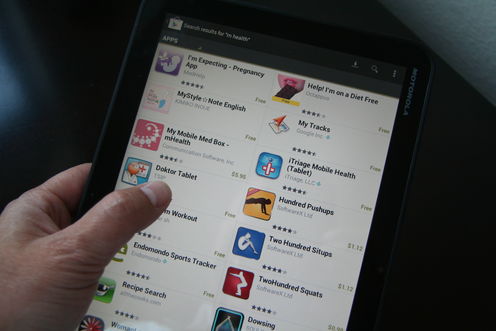
New tests and drugs have impacted health care for many decades. But we’re now seeing the emergence of completely different kinds of technologies that will radically alter how health care is both accessed and delivered.
In the past, patient and doctor, or other clinician, would generally meet in person. The clinician would employ the traditional process of seeking a history, undertaking physical examination and perhaps organising tests, to obtain details of the patient’s health-care needs and preferences.
The clinician would then relate this information to current knowledge of disease, prognosis and therapeutics, hopefully involving the patient, and together they would make decisions about a management plan.
A changing world
The internet has changed all that. Health professionals or not, we already share similar access to vast amounts of information about disease processes and their management. Much of this is readily available so that patients can be, and often are, highly knowledgeable about their health and care options.
A growing number of health apps – of varying quality – are available to support patients’ decisions about those options. And social media provide an instant network of peers with whom to share health concerns and experiences.

Biosensitive wearable technologies now monitor basic physiological processes, such as pulse rate and physical activity, permitting analysis and interpretation in real time. Future wearables and home-based sensors will track a growing range of measures, providing data for increasingly sophisticated assessment of the wearer’s current health status, and decision support for their care.
Many pharmacies and other primary health-care facilities offer point-of-care testing for use on site or at home. Right now such tests are largely limited to simple biological measures, such as blood glucose or cholesterol. But the range and number of possible tests are expanding rapidly, and coming down in price.
Soon it will be possible not only to diagnose a specific infection, but to accurately predict which anti-infective (if any) would be most effective for its treatment. All this will be done within minutes, and often without the need for a doctor, nurse or other health-care professional to examine, test and prescribe.
At the same time, advances in human genomics are providing the basis for redefining and reclassifying diseases. These advances enable increasingly accurate prediction of risk; new opportunities for effective prevention; and rapid confirmation of a growing number of diagnoses, clarifying the patient’s likely prognosis as well as informing treatment selection.
This is the basis of personalised medicine, which seeks to match health-management advice to the individual and not just to their disease. Parallel developments in genetic analysis of tumours and of the pathogens that cause infections are further refining the possibilities for matching the treatment to the patient and their disease.
Mental health too
It’s not just physical health care that’s being affected; information and communication technologies are transforming psychological care. Psychologists and psychiatrists rarely examine patients physically, so video-consultations are becoming more common.

A growing number of websites provide online psychological assessment and advice for the user. These range from straightforward screening for common mental problems to sophisticated measurements of cognitive and emotional functioning, which can predict responsiveness to specific therapies.
Psychological treatments, such as cognitive behavioural and mindfulness interventions, are readily available online. There is strong evidence for their effectiveness when used appropriately.
Communications technology can also enable real-time monitoring of patients’ adherence to prescribed medical treatment: this has obvious applications in the care, for example, of people with dementia. And smart dispensers can help all of us remember to take our medicines.
These developments remove the need for patients and their clinicians to meet in person, or even to communicate synchronously, unless physical interaction such as surgery is required. The array of generic and patient-specific information, and of electronic decision support aids that both patients and clinicians can access, are redefining the role of the clinician.
Doctors will increasingly play a role as expert guides to available resources, facilitating patients’ choices and decision making. Physical infrastructure for emergency management, surgical intervention and care of the very sick will still be needed. But information technology’s ability to collapse time and space will increasingly alter how health care is accessed and delivered in the community, enabling the right care every time, and at the patient’s convenience.
The implications for health service planning and policy, and for health professional education, are profound. Key considerations will include enabling equity of access to the potential benefits of information technology and ensuring that this enhances rather than distracts from the human connection we all need when we feel ill or fearful about our health.
Tim Usherwood receives funding from NHMRC to research electronic decision support in primary health care.
